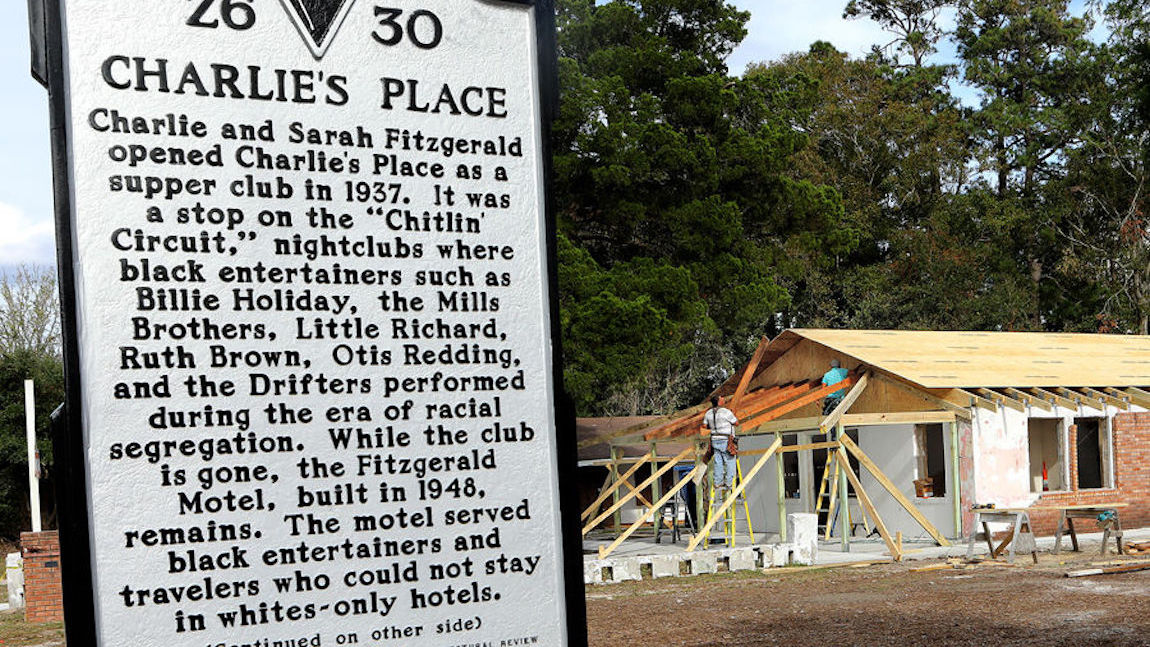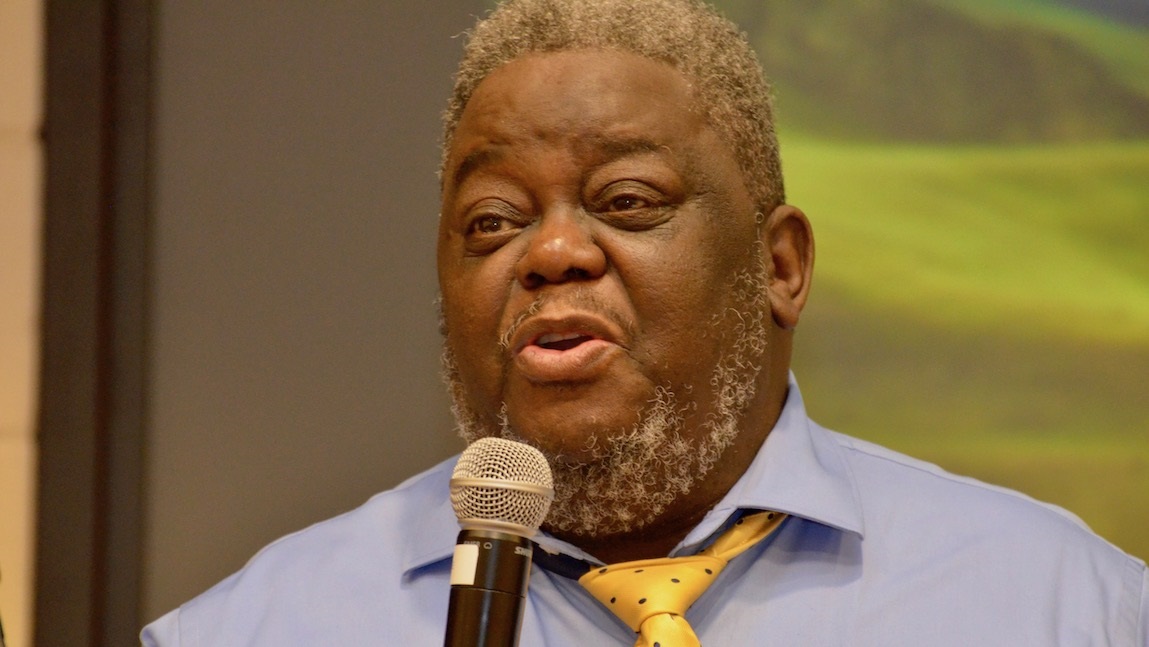By John Bitzegaio
In March of 2019 I attended a breakfast meeting of the Beach Dems at “Friendly’s.” Being a new resident to the area, I have found these meetings to be informative opportunities to meet like-minded people and hear about issues of shared concern. The food is good, too.
On this day I was fortunate enough to have been seated between an elderly white man and an elderly black man. They had never met each other but they had a shared interest in a most fascinating piece of Myrtle Beach history. Their mutual interest was in a nightclub called “Charlie’s Place.”
The white man had researched at Coastal Carolina University about the night in 1950 when a parade of KKK members terrorized the club.
Shots were fired, several were wounded, and Charlie was severely beaten – but no one was ever prosecuted.
The black man was Herbert J. Riley. He was actively involved in the preservation of “Charlie’s Place” and its history. I recently learned that he passed away in July. However, the preservation project is underway, and the history of “Charlie’s Place” and the events of that era are generally well documented, and truly interesting.
I found that PBS produced a documentary about this history that is still available on YouTube. I highly recommend that you view it.
The show focuses on the role that “Charlie’s Place” played in “Green Book” venues, especially along the “Chitlin’ Circuit.” Some of the greatest black musicians played there, including Billie Holliday, Ray Charles, Ruth Brown, and Little Richard. This PBS/ET documentary won an Emmy in June 2019.
Politics were highly charged regarding race relations in that era. Black residents had only recently acquired complete voting rights. One politician is shown speaking to a crowd of supporters, in the documentary, that echoes the rhetoric that we hear today coming from many Republicans.
He says, “If you’re happy with the communists and the nigra running affairs of your country, then I say you sit back down on your tail and let ‘em run it. Because that’s what you want. But I say to the people that does not want the nigra, and does not want the socialists, or the liberal element in this country running their business. I ask you now to rise up and be a white man!”
There is also an historical marker at the site of the former nightclub. It reads:
Charlie and Sarah Fitzgerald opened Charlie’s Place as a supper club in 1937. It was a stop on the “Chitlin’ Circuit,” nightclubs where black entertainers such as Billie Holliday, the Mills Brothers, Little Richard, Ruth Brown, Otis Redding, and the Drifters performed during the era of racial segregation.
While the club is gone, the Fitzgerald Motel, built in 1948, remains. The motel served black entertainers and travelers that could not stay in whites-only hotels. Oral tradition holds that “the Shag,” a form of southern swing dancing, originated here. Both white and black customers gathered here to listen to music and dance.
In 1950 the Ku Klux Klan led a parade through “The Hill,” the African American neighborhood where Charlie’s Place was located. The Klan returned later and shots were fired into the club, injuring many. Charlie was severely beaten, but survived. Some Klansmen were charged, but no one was prosecuted.”
Phase One of the “Charlie’s Place” preservation project is complete. That included reconstruction and remodeling of the Fitzgerald’s house in an effort for it to be used as a community center and event space. Workers also added space to the rear to include restrooms for visitors attending activities. Phase two will focus on restoring and reconstructing the old motel beside the Fitzgerald’s home. A few of the rooms will be kept as museum pieces of the era.
The Myrtle Beach Jazz Festival supports the project, and community donations are encouraged. As Herbert Riley, president of the Carver Street Economic Renaissance Corp. said, “We are involved in the resurrection of our community, and we are using the entertainment venue as a springboard to bring life back to this community. This has got big buzz in the community. It gives us a chance to have vendors on Carver Street, which is something we’ve been trying to do for a long time.”
I cherish that breakfast conversation we had at “Friendly’s.” I am discovering part of the area’s rich history, and looking forward to witnessing the growth and progress of this endeavor.






